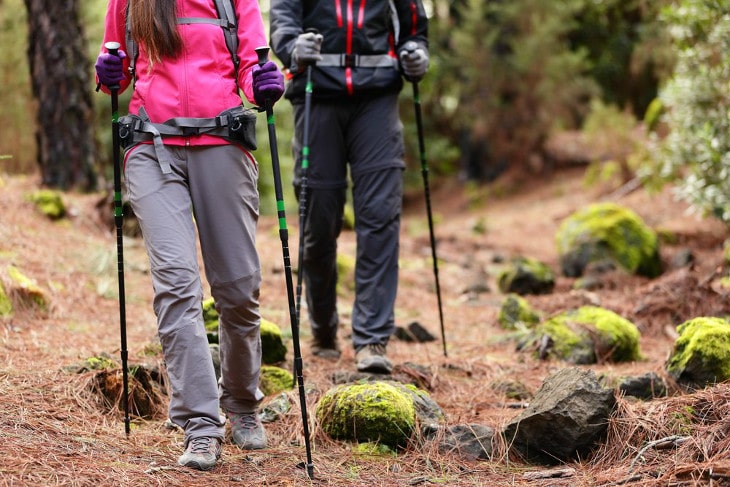By Michael Lanza
For hikers, trail runners, climbers, and others who play hard outside, fall, winter, and spring—and sometimes summer in the high mountains—challenge our ability to dress comfortably. You’re hot one minute, cold the next.
There’s a simple explanation: Temperatures below about 55° F. are cold enough to induce hypothermia; but when exerting hard, we can sweat even in temps well below freezing, and sweat conducts heat away from the body, making you cold. The key to comfort? Smart management of what you wear and your body temperature during activity. The following strategies have long worked for me.
Select the Right Layers
• Critical first step: pick the right base layer. It has to wick moisture from your body and be warm enough, but not too warm. In spring and fall, I like a midweight, long-sleeve top with a zip-neck for venting. Merino wool is nice for its soft fibers and wide comfort range in fast-changing conditions. In cool and below-freezing temps, I wear a lightweight top, for maximum wicking, under a warmer long-sleeve with a high zip-neck.
• For day trips or shorter workouts, when you want to go light, choose one piece of outerwear that breathes very well and cuts wind. Waterproofing isn’t essential (unless you expect sustained, cold rain or snow), so go with a more-breathable soft shell (typically 10 to 12 oz.) or a ventilated, ultralight wind shell (about 4 oz., but less breathable than a soft shell).
• On multi-day trips, when you’re probably carrying a waterproof-breathable shell, choose a midweight, insulating middle layer, like a fleece pullover or vest, that’s warm enough for moving in cold wind but breathes well so you don’t overheat. Pull on the rain shell for strong wind or when your exertion level drops, say, when walking downhill.
Adjust on the Fly
• Don’t add or remove a layer at the first hint of discomfort—conditions could change within minutes. Self-regulate through brief periods of hot or cold by changing your exertion level slightly.
• That said, add a layer before you get so chilled that fingers turn white or you feel cold in your core. Shed a layer before you’re sweating profusely (unless you’re running or engaged in some highly aerobic activity where sweating isn’t avoidable).
• Anticipate when you’ll need to adjust layers. Put on another layer right before you reach an exposed, windy pass or start a long descent in cool temperatures. Shed a layer before starting a big uphill slog.
• When possible, slow down your exertion level to minimize sweating; damp clothes can make you cold by conducting heat from your body.
• Sometimes sweating isn’t avoidable—say, on a long uphill run or hiking with a pack on. As you near the top of the climb, slow to a pace that keeps you warm without sweating much, so your body heat can begin to dry out that base layer.
• To avoid getting severely chilled as you start a long descent, put on a breathable jacket and continue maintaining a moderate pace, to keep your core warm and dry out your base layer.
• Keep gloves and headwear within reach, in your pants or jacket or a pack’s side pocket, so you can make changes on the move.
• Stay hydrated by drinking roughly every 15 minutes, and eat energy food roughly every 90 minutes to refuel your internal furnace.




